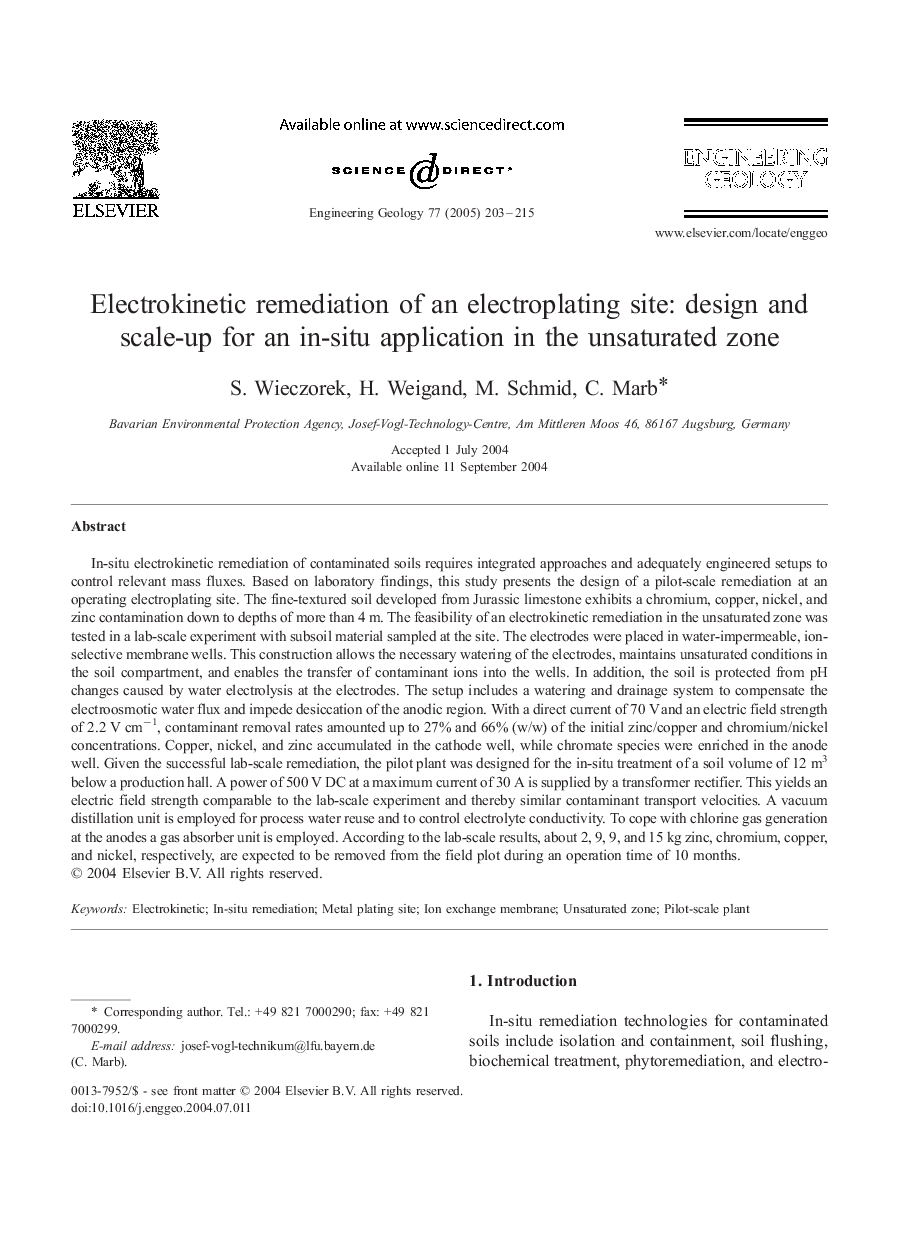| کد مقاله | کد نشریه | سال انتشار | مقاله انگلیسی | نسخه تمام متن |
|---|---|---|---|---|
| 9537788 | 1641929 | 2005 | 13 صفحه PDF | دانلود رایگان |
عنوان انگلیسی مقاله ISI
Electrokinetic remediation of an electroplating site: design and scale-up for an in-situ application in the unsaturated zone
دانلود مقاله + سفارش ترجمه
دانلود مقاله ISI انگلیسی
رایگان برای ایرانیان
کلمات کلیدی
موضوعات مرتبط
مهندسی و علوم پایه
علوم زمین و سیارات
مهندسی ژئوتکنیک و زمین شناسی مهندسی
پیش نمایش صفحه اول مقاله

چکیده انگلیسی
In-situ electrokinetic remediation of contaminated soils requires integrated approaches and adequately engineered setups to control relevant mass fluxes. Based on laboratory findings, this study presents the design of a pilot-scale remediation at an operating electroplating site. The fine-textured soil developed from Jurassic limestone exhibits a chromium, copper, nickel, and zinc contamination down to depths of more than 4 m. The feasibility of an electrokinetic remediation in the unsaturated zone was tested in a lab-scale experiment with subsoil material sampled at the site. The electrodes were placed in water-impermeable, ion-selective membrane wells. This construction allows the necessary watering of the electrodes, maintains unsaturated conditions in the soil compartment, and enables the transfer of contaminant ions into the wells. In addition, the soil is protected from pH changes caused by water electrolysis at the electrodes. The setup includes a watering and drainage system to compensate the electroosmotic water flux and impede desiccation of the anodic region. With a direct current of 70 V and an electric field strength of 2.2 V cmâ1, contaminant removal rates amounted up to 27% and 66% (w/w) of the initial zinc/copper and chromium/nickel concentrations. Copper, nickel, and zinc accumulated in the cathode well, while chromate species were enriched in the anode well. Given the successful lab-scale remediation, the pilot plant was designed for the in-situ treatment of a soil volume of 12 m3 below a production hall. A power of 500 V DC at a maximum current of 30 A is supplied by a transformer rectifier. This yields an electric field strength comparable to the lab-scale experiment and thereby similar contaminant transport velocities. A vacuum distillation unit is employed for process water reuse and to control electrolyte conductivity. To cope with chlorine gas generation at the anodes a gas absorber unit is employed. According to the lab-scale results, about 2, 9, 9, and 15 kg zinc, chromium, copper, and nickel, respectively, are expected to be removed from the field plot during an operation time of 10 months.
ناشر
Database: Elsevier - ScienceDirect (ساینس دایرکت)
Journal: Engineering Geology - Volume 77, Issues 3â4, March 2005, Pages 203-215
Journal: Engineering Geology - Volume 77, Issues 3â4, March 2005, Pages 203-215
نویسندگان
S. Wieczorek, H. Weigand, M. Schmid, C. Marb,